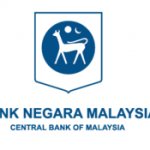Another way to think of it, is like having your regular contacts on speed dial on your mobile phone. You know that when you press a digit, you would be contacting your doctor, when you press another digit you would be calling your plumber. There is no doubt or uncertainty, about who is going to be on the other end of the line.

The national digital ID platform which Malaysia is implementing, proposes that public and private parties will have that same certainty that we are who we say we are, when they transact online with us. We won’t have to whip out our national ID card to prove our identity (well, we can’t because it is an online transaction), but we won’t have to keep verifying our identity.
Two other important features that this platform can enable is digital signatures and customer onboarding (Know-Your-Customer). One can leave virtual signatures on documents, rendering them legally binding and enforceable by law.
Customer onboarding by organisations like banks, also becomes a simpler and quicker process.
The website goes on to state:
“The National Digital Identity Initiative becomes a strategic step contributing an added value to the development and needed transformation in the current service sectors which are moving towards the digital platform. Indirectly, it supports other initiatives such as MAMPU’s Government Online Services 2.0 (GOS 2.0), Central Bank (BNM) Financial Sector Blueprint 2011 – 2020, Know-Your-Customer electronic usage by the banking sector and in line with National E-Commerce Strategic Direction Plan by Ministry of International Trade and Industry and Sharing Economy Roadmap by Malaysia Digital Economy Corporation (MDEC).”
It also briefly stated, about cross border digital services through safe and guaranteed digital identity ecosystems.
A public consultation of the National Digital ID Framework was carried out by MCMC from 24 July till 7 August https://www.mcmc.gov.my/en/national-digital-id/ra-ndid. The consultation tried to gather public response and feedback to among other things, 9 proposed applications for a national digital ID platform.
The consultation sought to ask if Malaysian citizens and permanent residents would use the national digital ID platform, in the following scenarios:
- Electronic healthcare records
- Government online services
- Financial institution eKYC
- Government assistance authentication
- Telecommunication verifications
- E-hailing verifications
- Education-linked authentication
- E-commerce verifications
- Pensions authentication
The Malaysia government website listed the following, as some of the reasons behind the National Digital ID platform:
- System fragmentation resulting in duplication of work, maintenance and cost.
- Lack of standardisation when it comes to identity verification
- The threat to safety and privacy of users’ data (ie. fraud risk); and
- Inconvenience in user’s online experience due to multiple log-ins and passwords.
Immigration and border control – another element for digital ID platform?
As recent as late last year, there had been reports the national digital ID platform would somehow also facilitate a new and updated national border control and immigration systems.
Late last year, NST reported a new immigration and border control system (SKIN)) worth RM3.5 billion was cancelled, and that compensation would be paid to Prestariang Bhd which was managing the project. SKIN was reported to have been in the final stages with phased implementations to start in April 2020.
In its place was a proposed Integrated Immigration System (IIS), and an RFP deadline was set for August 2019. The winner for the IIS project is expected to be announced by Q3 of 2020.
The front runners, Iris Corp, Datasonic Group, MyEG Services, and Heitech Padu, have been joined by S5 Systems, which is contemplating a backdoor listing via ConnectCountry Holdings.








